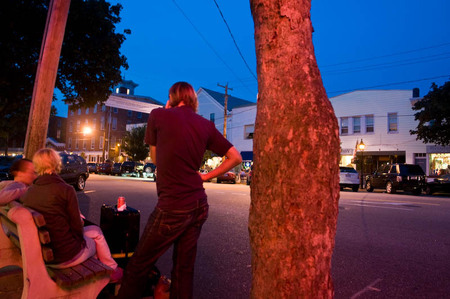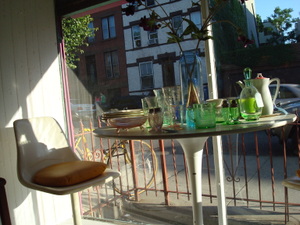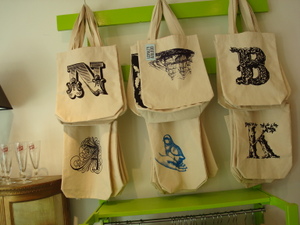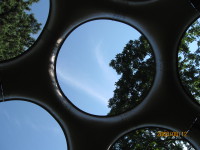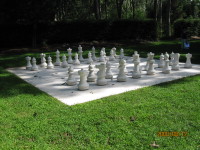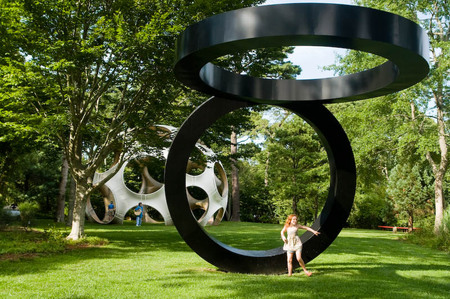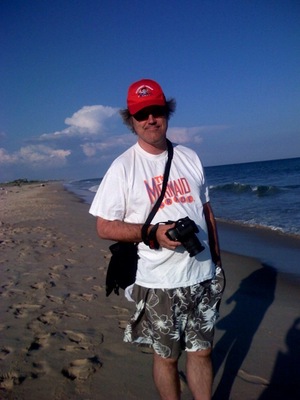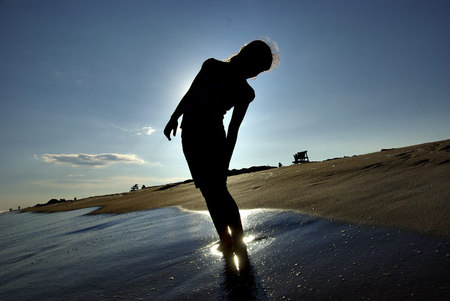Dr. Bob Wolk, the psychologist whose office in Concord Village we used to go to every week in our late teens, once told us he’d appeared on a TV talk show with someone he described as "a fine young man" – at least that’s what we wrote in our 1970 diary.
One of the first stories we ever wrote that got published (in Transatlantic Review) begins with these four words: "Somebody like Pete Hamill. . ."
Except there’s nobody quite like Pete Hamill.
Pete Hamill is still a fine young man, as well as an amazing writer whose early career was a touchstone for us growing up. We devoured his newspaper columns, magazine articles and everything else we could find by him. Pete Hamill provided proof to us that, yeah, you could grow up in Brooklyn and be a writer someday.
Last night we were lucky enough to have enough sense to go out in the rain to see Pete Hamill at the Park Slope Barnes & Noble. He’s promoting the paperback of his Depression-era novel North River, which we already read in hardcover. We didn’t buy it but got it at the library, and we think that probably would be okay with Pete, who began by saying how great it was to be back in "the neighborhood that shaped me" and talking about the local libraries which had nourished him.
Hamill said that around the country, people will ask him what it was like to grow up poor in Brooklyn during hard times, and he sometimes will answer that he wasn’t poor, because he had companions like Edmond Dantes in The Count of Monte Cristo and Jim Hawkins in Treasure Island. And he got them from the public library.
Discussing the Prospect branch library on 9th Street (its name gentrified in 1975 to the Park Slope branch), Hamill said he still saw lots of kids in there, reading, getting tutored, and making the kind of discoveries he did as a boy. At Grand Army Plaza’s central library, there are "immigrant kids at every table, reading their way into America."
Hamill said that Andrew Carnegie is his favorite American millionaire, because he created 1,600 libraries across America (and we love them all, from our Leonard branch library two blocks away to the Carnegie library in Eureka Springs, Arkansas, which we visited every day when we lived there in 2001). As an immigrant kid from Scotland, Hamill said, Carnegie went into the only library in Pittsburgh, a private library, and they looked at his clothes and heard his funny accent and told him to go home, it wasn’t a place for him.
The Brooklyn public libraries were definitely a place for the young Pete Hamill.
Last night he talked about recently passing by the corner of 11th Street at Seventh Avenue, where he recalled reading The Count of Monte Cristo, borrowed from the library, perched on a cellarboard. And he talked with passion about reading, about making sense out of symbols on a page, a more active form of entertainment than the TV that would come later.
Hamill discussed New York in general and Park Slope in particular in the bygone eras he writes about in North River and other novels. On V-J Day in August 1945, he said, Seventh Avenue in the Slope erupted in pure joy and confidence as people poured out into the street to celebrate, to the sounds of foghorns and church bells, the end not just of the long war but of 15 years of sacrifice and hard times, starting with the Great Depression.
He read an excerpt from the novel, a story about a World War I (Great War then, of course) field doctor, James Delaney, now a West Village GP with an office hard by the North River, which is what New Yorkers still called the Hudson back then. When Delaney’s 3-year-old grandson Carlito is left on his doorstep, Delaney has to deal with his internal depression, his frustrations toward his daughter, and the loss of his wife, who’d run off after he returned from Europe. Delaney hires Rosa, a Sicilian immigrant, to care for Carlito when he’s at work. As a doctor, Delaney has connections to all the neighborhood, including the Mafia.
As the story unfolds, Delaney and Rosa grow closer, and the passage Hamill read has him taking her first to Times Square and then for her long-hoped-for night of dancing at Roseland, where a skinny Italian-American singer [Hamill explained that the ethnic slur wop came from "without papers," though we’ve heard other possible origins] performs such classic 30s songs – meaningful to people going through such hard times – as "You Made Me Love You," "Life is Just a Bowl of Cherries" and the melancholy anthem "Brother, Can You Spare a Dime?"
Hamill reads well, and his evocation of the period, from the movie marquees and billboards in nighttime Times Square and the two-cent-apple lady singing "Mother McCree" to the skee-ball parlors and framed photos of FDR by newsstands awaiting the bulldog editions of the Mirror and Daily News are well-crafted.
It’s all nostalgia, of course – something Hamill later said New York City is particularly prone to – and it skirts sentimentality, but we bought it when we read it and we bought it listening to the words last night.
Hamill patiently took lots of questions and told lots of good stories, like about whiling away rainy or wintry Saturday mornings at the Minerva theater on Seventh Avenue and 14th Street, when admission was 12 cents before noon, and how the time a local street gang, the Tigers, surreptitiously used screwdrivers to unscrew a bunch of seats and walked out of the movies with the whole row attached.
The crowd at the bookstore was so large we spent most of the reading unable to see Hamill as the only space was behind a row of biology and physics books. As you might expect for a book that recalls S. Klein on the Square (Union Square for you hipsters) and the fox trot, a lot of the crowd were older, but there were people of all ages, including some twentysomethings standing in the row of books with us. Eventually we found an open space where we could see Mr. Hamill in his signature black t-shirt under a sport jacket.
In response to one of maybe twenty questions people asked, Hamill recalled his famous New York Magazine cover story from July 1969 about growing up in Brooklyn and touting the borough’s charms in a time when few tastemakers were looking at Brooklyn with anything but contempt and amusement. We remember getting that issue in the mail and nodding our head as we read it on our bedroom floor.
So, Hamill joked, maybe he’s responsible for the current Brooklyn boom and all its attendant pleasures and pains: "the incredible velocity of change." Maybe he is. He may lament the loss of community feeling engendered by the Depression and WWII – how Tammany bosses and neighbors would come to the aid of families struggling with particular hard times – but he celebrates the loss of that sense of menace from rougher days and he sees immigrant Dominicans, Chinese and Mexicans following the same paths as earlier Irish, Italian and Jewish immigrants, "making us feel better about ourselves as a people."
Hamill said a lot more – about his writing habits (he starts every book in longhand for that tactile connection), about comic books and comic strips being great training for creating narratives, about music and New York and education and journalism (he teaches it at NYU).
And Hamill was much more interesting than what we can convey here, but there’s one story he told that stuck with us, which related to how he approached being a newspaperman and particularly a columnist writing about ordinary New Yorkers:
He was about 8 and his brother Tommy about 6 and they were going to Pier 88 to watch the wreck of the Normandie as it continued to sink during the final years of World War II. There was a homeless bum begging on the corner, and the boys started making fun of him. Their mom got very angry and yelled at them for ridiculing the man, finally telling her sons, "Don’t ever look down on anyone!"
Pete Hamill said those words resonated with him his whole life. He thought of them when he wrote one of his first newspaper stories, about a guy and his family being evicted from their apartment because he’d lost his job and couldn’t pay the rent. The day his story appeared in the paper, people called in with job offers and ways to save the furniture on the street from getting wet or ruined.
That sense that the lives of "ordinary" people are worth caring about and writing about is what makes Pete Hamill a terrific writer in North River and his other books.


